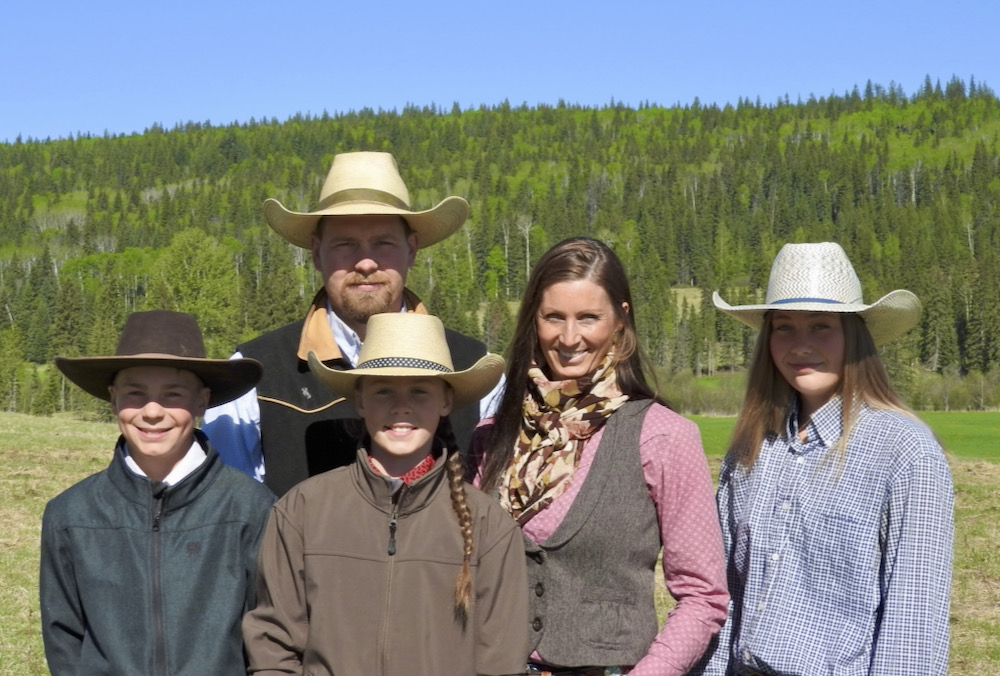In the cattle industry, the successes of the present and future innovations are often closely linked to past experience. The James Hargrave Legacy Foundation aims to nurture this type of innovation by supporting people whose work and interests align with Hargrave’s values.
Chancey Guichon, the first recipient of the James Hargrave Legacy Fund Award, is a fourth-generation beef producer and steward of the land in the Strathmore, Alta. area. He takes great pride in caring for and continuously improving the soil that supports his family’s cattle operation, just as the late James Hargrave did.
Read Also

What to know before you go to Agribition 2025
If you’re attending Agribition 2025, this is the place to find out about tickets, dates and what’s happening this year.
The award was created shortly after Hargrave’s passing in October 2017. The 34-year-old Walsh-area rancher was driving a water truck to help suppress the Hilda grass fire in southeastern Alberta when his truck rolled and collided with another vehicle.
At Hargrave’s service, one rancher commented to Lindsye Dunbar, Western Stock Growers Association manager, that Hargrave was so young and had already done so much for the industry — imagine what they could have done if they’d had 50 more years with him. This comment sparked a vision for members of the Western Stock Growers Association.
The Legacy Foundation was established to promote the “industry needs more of James’s mentality, as Dunbar puts it. It has the goal of “fostering innovation and progress in the beef industry in Canada.”
It will also preserve Hargrave’s legacy and honour his contributions as a leader and advocate for the beef industry as well as land stewardship. Apart from managing an expansive ranching operation founded by his great-grandfather in the late 1800s, Hargrave contributed his time and expertise to the industry, serving as first vice-president of the Western Stock Growers Association and chairman of the Alberta Grazing Leaseholders Association.
Hargrave was a principled steward of the grasslands, an avid proponent of the beef industry and passionate about the succession of ranching operations from one generation to the next. Family was his highest priority.

The fund aims to award $3,000 annually to an individual who exemplifies these values or is undertaking projects related to one or more of Hargrave’s key areas of interest.
The main draw in choosing Guichon for the award, Dunbar explains, is that “he embodies the spirit of James Hargrave.”
“Chancey’s passion for innovation, progress and succession in the beef industry is a perfect match for what the James Hargrave Legacy Foundation wants to foster.”
Along with a strong drive to ensure his family’s cattle operation, Cross Bow Cattle Company, carries on far into the future, Guichon is eager to improve its production in a responsible and sustainable way.
“It really is an honour to receive this type of recognition,” he says. Receiving this award has allowed Guichon to accelerate the implementation of his ideas.
Improving the land
One major challenge Guichon faces in his location, with close proximity to the city of Calgary, is the ever-rising land values and dwindling opportunity to acquire or rent productive agricultural land. With fierce competition from various sectors vying to acquire the land used to raise cattle, Guichon focuses on finding ways to make the land more productive and make it last.
Cross Bow Cattle Company has seen many positive changes since making the shift from traditional management practices to some of the more innovative methods available.
One strategy Guichon employs, when hay prices allow, is bale grazing. He believes that implementing this practice has likely had the largest impact on grass production to date. Bale grazing in target areas such as dry hilltops has been very beneficial. First, it provides natural fertilizer to those lighter soils. Next, as the leftover hay decays, it helps build the water-holding capacity of the soil, keeping more moisture for that grass.
Keeping more of the snow melt and rain on those hilltops means fewer problems with salinity in low-lying areas prone to foxtail barley. While the foxtail is still an issue in some areas, he is working to reclaim those problem spots for productive grazing with special saline-tolerant grass mixes.
“If I’m estimating, I’d say we’ve tripled our grass production, especially on native pastures where we’ve done it, as the tame species found in the hay bales help to set seed and virtually reseed those native pastures with bromes, wheat grasses and certain legumes,” Guichon says.
It’s important to note the Guichons intentionally let hay crops fill seed heads before cutting and baling to reseed those pastures.

Incorporating Union Forage high-legume mixes into tame pastures, along with increasing the pasture rotation regimen, has had a similar effect on improving pasture quality and production. Moving seeds from one pasture to another via the cows has helped re-establish desired species in those areas, increasing the number of grazing days and productivity of their pastures.
Guichon has also observed changes in the water-holding capacity of the soil in many of his pastures.
“I believe our water-holding capacity is slowly increasing due to an increased topsoil and thatch layer. Even with low rainfall, we’re seeing an increase in production in certain pastures.”
Another tactic he has recently adopted to lengthen the grazing season is swath-grazing. This creates yet another soil-building opportunity. By planting an oat cover crop, underseeded with a Union Forage brassica mix of two different turnip varieties and a forage rape, they achieved a heavy cutting of oats and leaf material in the swath along with impressive regrowth.
Guichon says the cattle will hit that regrowth first and eat the parts of the turnips above ground, with the rest of the root being left in the soil to break down and add organic matter. This, in turn, serves to increase the carbon and water retention of the soil. Beyond that and the boost in feed tonnage, another added benefit is the quality and variety of nutrients available to the cattle.
Seeding fall rye has allowed them to capitalize on early spring moisture. This year, despite minimal rainfall, they were able to silage the initial crop, bale the first regrowth and then graze 50 pair on the second regrowth in early September. They’ve seeded more fall rye this fall to graze at calving time and to combine.
“Seeding multiple fields for both purposes is offering us some flexibility.”
Another key area that Guichon has focused on improving is the genetics of his cow herd. This has been accomplished through his observations and cattle experience, along with bits of advice he’s gathered from reputable cattle producers over the years. By developing a strict culling criteria and using top industry genetics, he has generated a herd that thrives in its environment and makes the most of available resources.
Broadening knowledge and experience
In the beef industry, knowledge is passed from one generation to the next and the mindset of lifelong advancement is rooted deeply in the core of many agriculture producers.
While his bachelor of applied science and agriculture business and economics background has been put to good use on the operation, much of Guichon’s knowledge has come from key mentors. Similar to many young producers, Guichon’s father, Gary, has been an invaluable source of information and encouragement.
Some important pieces of advice from his father that he refers back to on a regular basis include to always keep grass and fences in good condition. Never sacrifice the grass to run more cows than it can handle. And always be realistic with costs and pencil everything out. If a deal seems too good to be true, it probably is.
On the genetics side of the operation there have been many producers who have helped guide Guichon and imparted valuable advice.
And when it comes to soil health, forage varieties and pasture improvement, Graeme Finn of Union Forage was the one who helped Guichon make a game plan and implement the best strategies. He is continuously driven by Finn’s advice to never be afraid to be the one being talked about in the local coffee shop. There’s a reason they’re in there gossiping while you’re out making moves and improvements, he adds.
When asked if he could provide any advice or inspiration to other young producers, he stressed the importance of getting out and asking questions.
“Be aggressive in broadening your knowledge and experience,” he says. He also encourages others to try new practices on a small scale, as his father emboldens him to do, and increase the use of that practice as it proves successful for you.
He also adds for those trying to improve their pastures and soil health to “implement cattle wherever you can to improve your land.”
The James Hargrave Legacy Foundation accepts applications on specific projects, including research or individual on-farm projects as well as applications based on more general or broader commitment within the beef industry. More information can be found at jameshargravelegacy.com.
Mona Howe, owner of Mo Cattle, raises seedstock and commercial Angus cattle in southeastern Alberta and freelances in her spare time.
















